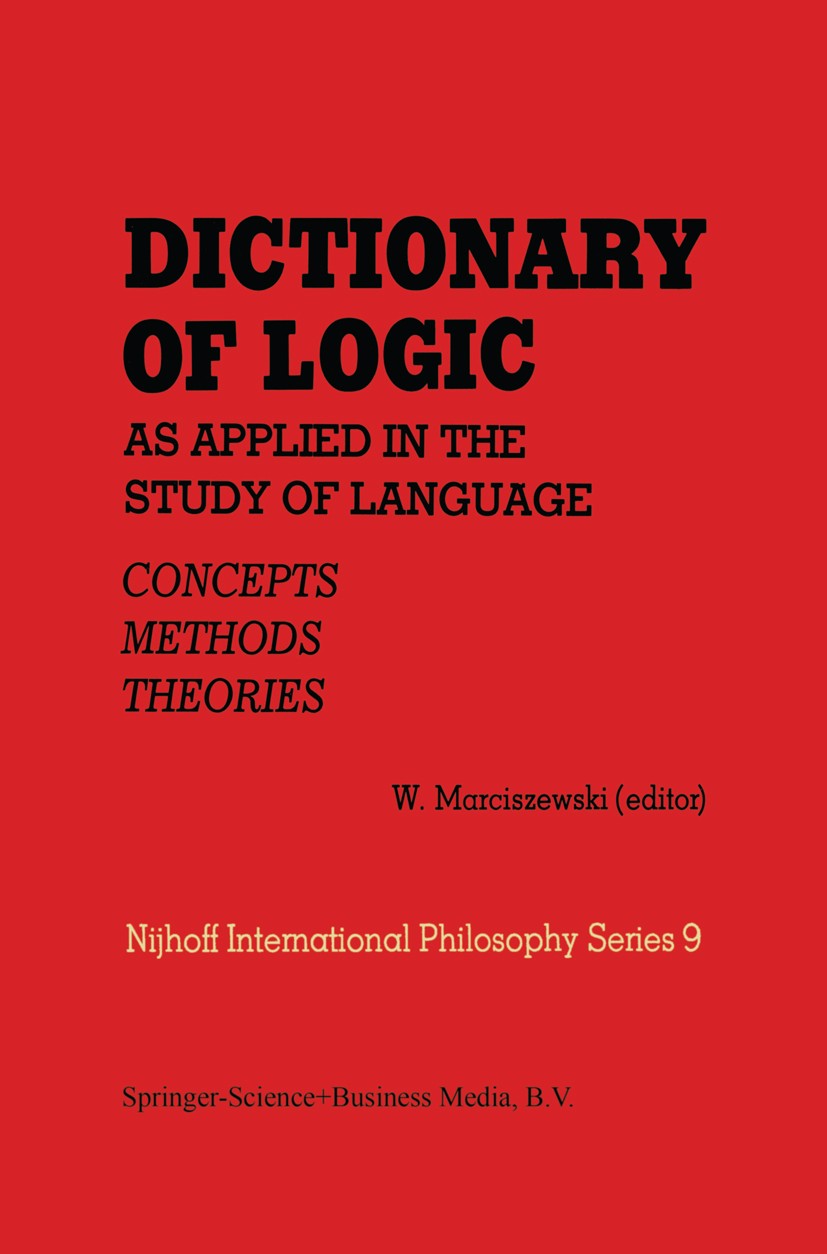| 书目名称 | Dictionary of Logic as Applied in the Study of Language | | 副标题 | Concepts/Methods/The | | 编辑 | Witold Marciszewski (professor, head of Department | | 视频video | http://file.papertrans.cn/272/271070/271070.mp4 | | 丛书名称 | Melbourne International Philosophy Series | | 图书封面 |  | | 描述 | 1. STRUCTURE AND REFERENCES 1.1. The main part of the dictionary consists of alphabetically arranged articles concerned with basic logical theories and some other selected topics. Within each article a set of concepts is defined in their mutual relations. This way of defining concepts in the context of a theory provides better understand ing of ideas than that provided by isolated short defmitions. A disadvantage of this method is that it takes more time to look something up inside an extensive article. To reduce this disadvantage the following measures have been adopted. Each article is divided into numbered sections, the numbers, in boldface type, being addresses to which we refer. Those sections of larger articles which are divided at the first level, i.e. numbered with single numerals, have titles. Main sections are further subdivided, the subsections being numbered by numerals added to the main section number, e.g. I, 1.1, 1.2, ... , 1.1.1, 1.1.2, and so on. A comprehensive subject index is supplied together with a glossary. The aim of the latter is to provide, if possible, short defmitions which sometimes may prove sufficient. As to the use of the glossary, see the comment p | | 出版日期 | Book 1981 | | 关键词 | deontic logic; logic; modal logic; predicate logic | | 版次 | 1 | | doi | https://doi.org/10.1007/978-94-017-1253-8 | | isbn_softcover | 978-90-481-8257-2 | | isbn_ebook | 978-94-017-1253-8 | | copyright | Springer Science+Business Media Dordrecht 1981 |
The information of publication is updating

|
|
 |Archiver|手机版|小黑屋|
派博传思国际
( 京公网安备110108008328)
GMT+8, 2025-11-8 01:35
|Archiver|手机版|小黑屋|
派博传思国际
( 京公网安备110108008328)
GMT+8, 2025-11-8 01:35


